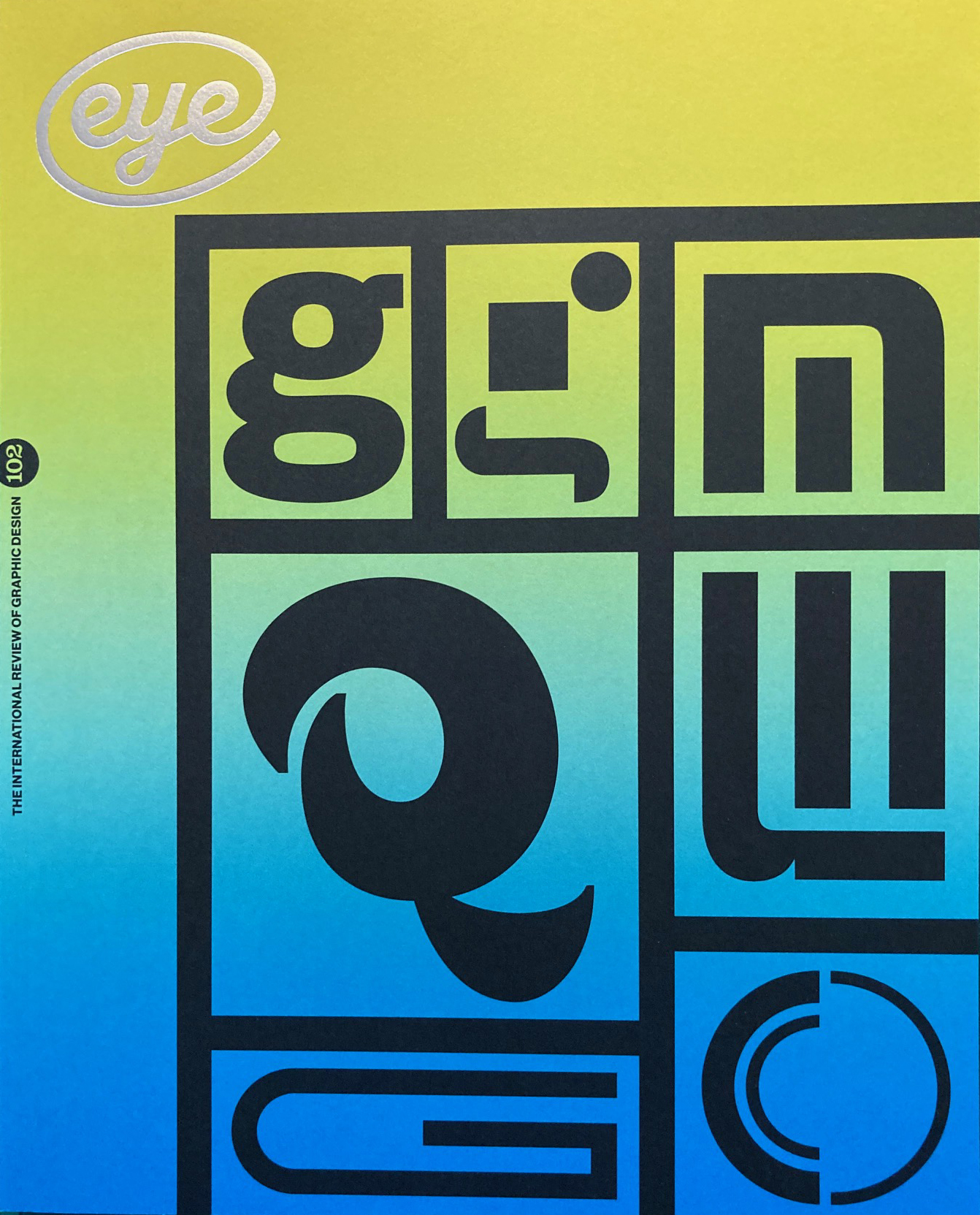Autumn 2021
Rebalancing the design canon
Elizabeth Resnick looks at the practitioners and educators intent on revising our understanding of women’s roles in design history
ShandyGaff ‘healthy food’ hot spot in San Francisco with supergraphics by Marget Larsen, 1971.
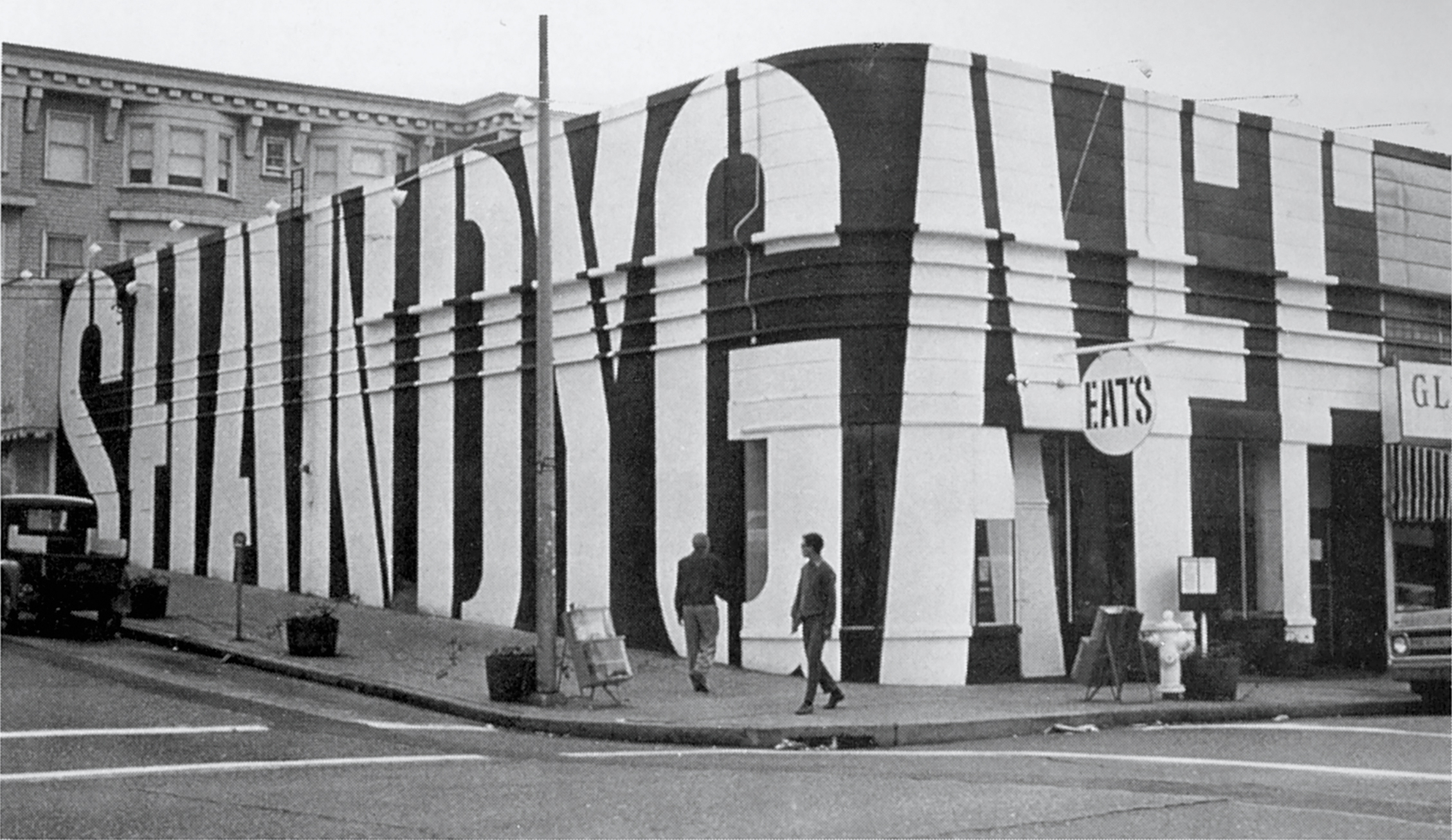
In 1991, in the AIGA Journal of Graphic Design, US designer, design educator and historian Martha Scotford published her seminal article ‘Is There a Canon of Graphic Design?’. She chose five books that were considered the best historical surveys at that time and applied a statistical analysis to question their inclusion criteria. Later, in Eye 68, she wrote: ‘When I researched my 1991 article by counting images, I claimed that the authors of the five books involved had unintentionally created a canon.’
But is there a genuine canon of graphic design history?
‘Graphic
design history is, generally speaking, a history of professional
practice,’ wrote US designer and design educator Aggie Toppins in
an article for AIGA
Eye on Design.
‘In
text books, at conferences, and for college courses, design
historians and educators explain the development of the industry
through the example of pivotal figures, canonical works, and dominant
styles.’
‘Errata: A feminist revision to Portuguese graphic design history’, Gabinete Gráfico, Museu da Cidade, Porto, from 27 August to 23 October 2021. Exhibition design ID-AE studio. Installation photo: Alexandre Delmar.

The
first historians to show an interest in graphic design were
professionals seeking greater recognition.
Toppins writes that this ‘movement … saw a need to create a history to elevate graphic design above an amateur’s knowledge, decouple the industry from trade disciplines, and position the field as an equally important cultural player alongside architecture, fashion design, and the fine arts.’
Ruth
Sykes, a UK designer and design educator, believes this to be an
unfortunate consequence of an otherwise positive step. ‘Graphic
design history has largely foregrounded the achievements of male
graphic designers,’ she says, ‘leaving the contribution of female
graphic designers underexamined.’ Keenly aware of this oversight,
Sykes says: ‘If graphic design history were revised to include more
of the accomplishments of female graphic designers, it would be one
part of the process of achieving equal industry status for female
graphic designers.’
Italian
designer and design educator Silvia Sfligiotti offers a different
perspective. ‘Expanding the canon by adding more “masterpieces”
designed by women, or names of female “masters” would not solve
the problem of a lack of critical attitude,’ she argues. ‘Talking
about how a canon is created is more interesting.’
‘We
have a vested interest in dismantling the canon,’ adds US designer
and design educator Katie Krcmarik. The people with the power wrote
the history books and unsurprisingly wrote about people like
themselves.’
Since
1990, there has been a disproportionate influx of female students
entering design courses. ‘Women have made up a good amount of the
student body in graphic design programs, but their professional work
seems to be underrepresented in popular canons,’ says Louise
Paradis, a Canadian designer and design educator. ‘What has
happened to all these female designers?’ A feasible riposte is that
female graphic designers often combine teaching with their practice,
resulting in a substantial increase in both part-time and full time
female faculty members in colleges and universities over the past two
decades.
‘When
I started working as a graphic designer and talking to other female
designers,’ recalls Tereza Bettinardi, a Brazilian designer and
design educator, ‘I realised how few female references we had
during our education and early professional lives. I believe the
canon of graphic design history is still very male and white. But I
hope this will change in the future.’
US
designer and design educator Tasheka Arceneaux-Sutton says: ‘Design
history plays a huge role in my research, and lately I have focused
on Black women graphic designers.’
Expanding
a ‘canon’ fully to embrace the accomplishments of female graphic
designers is being addressed by an international cohort of
professional female graphic designers and design educators. To tackle
this biased imbalance, they have shifted their professional practice
towards researching, writing and curating exhibitions on
marginalised, overlooked and underappreciated female designers.
Collectively, they aim to question and challenge the widely accepted
pantheon of established male figures and, by doing so, reinvigorate
the canon of graphic design.
Seeking
role models
Hall
of Femmes is a project founded in 2009 by Swedish designers and
design educators Samira Bouabana and Angela Tillman Sperandio. It
includes lectures, exhibitions, interviews, podcasts and the Hall of
Femmes book series (see
Eye
94).
Each book in this series features a designer and her work via
in-depth interviews and previously unpublished images. ‘The project
started as a personal desire to find female role models in graphic
design – a field where women’s contributions to developing the
profession had not been documented or had enough recognition.’ A
book on Rosmarie Tissi, their tenth, is promised.
Australian
affirmation
#afFEMation:
Making Heroes of Women in Australian Graphic Design
is a website created by Australian designer and design educator Dr
Jane Connory (see
Eye
blog, July 2018).
Her PhD research focused on women’s visibility, diversity in design
and gender equity in Australian graphic design. She created
#afFEMation
(affemation.com)
– a network of women in Australian graphic design – to help young
designers develop their networks and find mentors to build their
careers. ‘When today’s design educators question the existing
canon and seek out or create resources to widen its scope, the
students benefit on so many levels,’ Connory says. ‘Graphic
design graduates coming out of universities and colleges across the
globe are mainly women, which is ironic considering the dominance of
men in senior roles out in the industry. Some of these actions can
include bringing together teams of people to write the biographies of
women graphic designers on Wikipedia.’
Defying
the dumpsters
US
designer and design educator Louise Sandhaus says: ‘On completing
my book, Earthquakes,
Mudslides, Fires and Riots: California & Graphic Design 1936–1986
(see
Eye
90),
it was clear that the history I’d spent considerably more than a
decade compiling was just a crumb of a crumb of California’s
graphic design history,’ she says. ‘I knew there was a wealth of
designers and projects I had overlooked because of my own biases.
Among the designers still in need of research were women, of which
California boasted a particular abundance, thanks to the freedom that
they may have enjoyed here. […] It took three years of research,
writing, photography and design to realise the book A
Colorful Life: Gere Kavanaugh, Designer
(see
Eye
99)
by Kat Catmur and myself. And Kavanaugh had an archive of her work.
Few archives specialise in graphic design, and so, with no place to
go, much of this history ends up in dumpsters.’
Images from ‘Errata’, Porto, 2021. ‘The process of
documenting and remembering is inherently misogynistic,’ write
curators Olinda Martins and Isabel Duarte in the exhibition
catalogue. Eva
magazine, 1933. Cover design: Guida Ottolini. Courtesy Biblioteca
Silva.
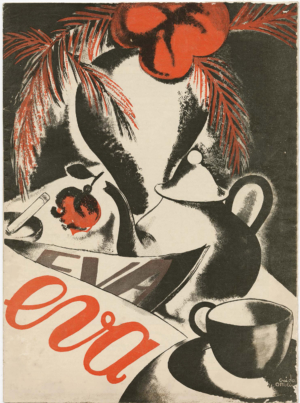
Alda Rosa’s catalogue cover for ‘Conferências Proferidas durante o Colóquio sobre Design Industrial’, 1971. Client: INII.
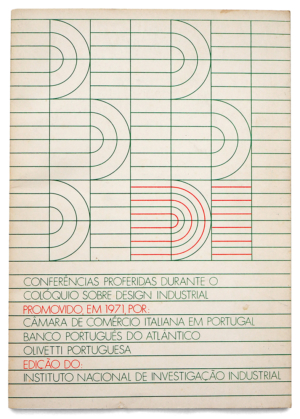
Portuguese
traces
Errata
is a relatively new project founded by Isabel Duarte with Olinda
Martins. The Errata
website (errata.design/en) states: ‘Errata is a para-academic
research project concentrating on the visibility of women in
Portuguese graphic design history. Disseminated through public
exhibitions and events, an ongoing series of podcasts and publishing,
the Errata project engages with criticism, education and research to
uncover the invisible stories of women designers in Portugal and
facilitate dialogues exploring methods of improving gender
representation in graphic design history.’ The first public
exhibition of the Errata research project took place in the Gabinete
Gráfico of Museu da Cidade in Porto from 27 August to 23 October
2021. ‘Through collecting, documenting and displaying the works of
Portuguese women graphic designers from throughout the twentieth
century, this exhibition will bring to the fore practitioners who
have been overlooked by canonical design history.’
Harper’s Bazaar January 1968. Art direction: Ruth Ansel and Bea Feitler. Photograph by Bill Silano.
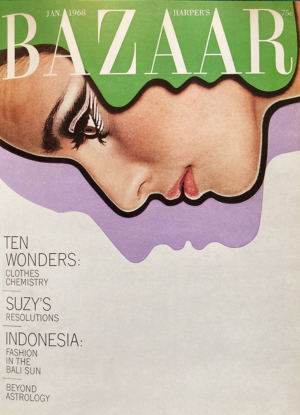
Shift
in perception
The
first book by Briar Levit, a US designer and design educator, is
Baseline
Shift: Untold Stories of Women in Graphic Design History
(2021). Its fifteen essays address subjects such as the book design
work of Ellen Raskin; Ho-Chunk indigenous artist and designer Angel
De Cora; Harlem Renaissance designer Louise E. Jefferson; South
African typesetter and anti-apartheid activist Norma Kitson; San
Francisco designer Marget Larsen; and Bea Feitler. ‘Graphic design
history has become the centre of my academic research after making
the documentary Graphic
Means: A History of Graphic Design Production’,
says Levit. (See
article in Eye
95.)
Truck with Marget Larsen’s Parisian Bakerie identity, 1960.

Changing
the frame
In
1994, US designer, design educator and historian Martha Scotford
wrote ‘Messy History vs. Neat History: Toward an Expanded View of
Women in Graphic Design’, published in the journal Visible
Language
(28:4). Scotford states: ‘For the contributions of women … to be
discovered and understood, their different experiences and roles
within the patriarchal and capitalist framework they share with men,
and their choices and experiences within a female framework, must be
acknowledged and explored. Neat history is conventional history: a
focus on the mainstream activities and work of individual, usually
male, designers. Messy history seeks to discover, study and include
the variety of alternative approaches and activities that are often
part of women designers’ professional lives.’
Elizabeth Resnick, design educator, curator, writer, Massachusetts, US
First published in Eye no. 102 vol. 26, 2021
Eye is the world’s most beautiful and collectable graphic design journal, published for professional designers, students and anyone interested in critical, informed writing about graphic design and visual culture. It is available from all good design bookshops and online at the Eye shop, where you can buy subscriptions and single issues.

